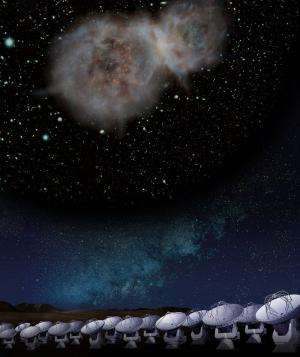ALMA reveals constituent of a galaxy at 12.4 billion light-years away

An international research team, led by Associate Professor Tohru Nagao from Kyoto University, and including researchers from Japan and Europe, has observed a "submillimeter galaxy" located about 12.4 billion light-years away using ALMA (Atacama Large Millimeter/submillimeter Array), and has successfully detected an emission line from nitrogen contained in that galaxy.
Comparisons between the data obtained by ALMA and numerical models revealed that the elemental composition of this galaxy in the early universe, at only 1.3 billion years after the Big Bang, was already close to the elemental composition of the present universe.
This result suggests that intense star formation activities had occurred in the early universe. A submillimeter galaxy is a type of galaxy which has intense star formation activity and is covered by large amounts of dust which block visible light. This situation hampers detailed observation of the galaxy with optical telescopes, such as the Subaru Telescope. ALMA observes celestial objects at millimeter wavelength, which penetrates though dust clouds. In addition, ALMA also has extraordinary sensitivity, which is capable of catching even extremely faint radio signals.
This is the result with one of the most distant galaxies ALMA has ever observed.
Provided by ALMA



















